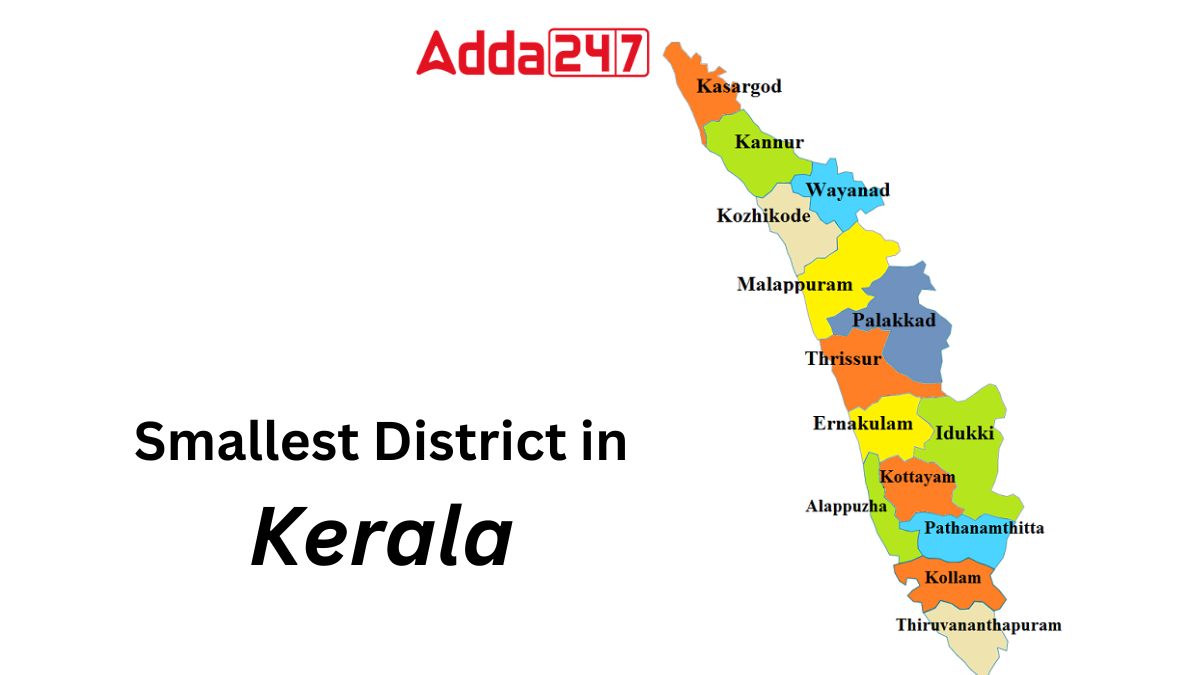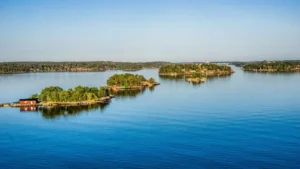Kerala, often referred to as “God’s Own Country,” is renowned for its lush green landscapes, serene backwaters, and vibrant cultural heritage. Within this picturesque state lies Alappuzha, the smallest district by area, yet brimming with natural beauty, rich history, and diverse communities. Let’s embark on a journey to discover the essence of Alappuzha, exploring its unique facets.
Smallest District in Kerala, Name
Alappuzha district, the smallest district in Kerala, spans over an area of 1,414 square kilometers. Nestled along the serene backwaters of Kerala lies Alappuzha, a quaint district that boasts a rich tapestry of culture, history, and natural beauty. Also known as Alleppey, this picturesque destination in southern India offers a mesmerizing blend of lush landscapes, intricate waterways, and vibrant local life. From its tranquil backwaters to its bustling town center, Alappuzha entices travelers with its unique charm and myriad attractions.
Smallest District in Kerala – Historical Significance
Alappuzha’s history is as rich and diverse as its landscapes. Carved out of the erstwhile Kottayam and Kollam districts, Alappuzha district was officially formed on August 17, 1957. However, its roots trace back to ancient times, with literary works such as Unnuneeli Sandesam offering glimpses into the region’s past. The district flourished under various rulers, including the second Chera Empire and colonial powers like the Portuguese and Dutch, leaving behind a legacy of cultural diversity and historical landmarks.
Smallest District of Kerala- Etymology and Geography
The name “Alappuzha” derives from the Malayalam words “Ᾱlayam,” meaning “home,” and “puzha,” meaning “watercourse” or “river.” True to its name, Alappuzha is characterized by a labyrinth of waterways, including canals, backwaters, and lagoons, which define its unique geography. The district’s coastal location and fertile plains contribute to its thriving agricultural industry, with the iconic Kuttanad region earning the moniker of the “Rice Bowl of Kerala.”
Culture and Traditions of Alappuzha, Kerala’s Smallest District
Alappuzha’s cultural fabric is woven from a diverse tapestry of traditions, religions, and languages. With a predominantly Hindu population, the district also boasts sizeable Christian and Muslim communities, each contributing to its vibrant social landscape. The local dialect, a variant of the Central Travancore Malayalam, reflects the region’s linguistic heritage, while traditional art forms like Kathakali, Mohiniyattam, and Theyyam add color to its cultural tapestry.
Kerala’s Smallest District – Economic Hub and Tourism
Economically, Alappuzha thrives on agriculture, marine products, and tourism. The coir industry, synonymous with the region, is a cornerstone of its economy, with Alappuzha serving as the traditional home of coir manufacturing in Kerala. Additionally, the district’s extensive backwaters and scenic beauty make it a sought-after tourist destination, attracting millions of visitors annually. Houseboat cruises along the backwaters, the annual Nehru Trophy Boat Race, and serene beach getaways are just a few highlights of Alappuzha’s tourism allure.
Transportation and Connectivity
Alappuzha’s strategic location along Kerala’s coast makes it easily accessible by road, rail, and water. National Highway 66 connects the district to major cities like Kochi and Thiruvananthapuram, while the Ernakulam–Kayamkulam coastal railway line provides convenient rail access. The extensive network of backwaters and canals also serves as a vital transportation route, with the National Waterway 3 passing through the district.
Administrative Politics of Alappuzha, the Smallest District in Kerala
Administratively, Alappuzha is divided into revenue divisions, taluks, and local self-government bodies, each playing a crucial role in governance and development. The district’s political landscape is shaped by multiple legislative assembly segments and parliamentary constituencies, reflecting its diverse socio-political dynamics.
Kerala State At a Glance
- Country: India
- Region: South India
- Formation: 1 November 1956
- Capital: Thiruvananthapuram
- Districts: 14
- Government: Government of Kerala
- Governor: Arif Mohammad Khan
- Chief Minister: Pinarayi Vijayan (CPI(M))
- Chief Secretary: V. Venu, IAS
- State Legislature: Kerala Legislative Assembly (140 seats)
- National Parliament: Parliament of India
- Rajya Sabha: 9 seats
- Lok Sabha: 20 seats
- High Court: Kerala High Court
- Area Total: 38,863 km2 (15,005 sq mi)
- Area Rank: 21st
- Elevation: 900 m (3,000 ft)
- Population (2018): 34,630,192
- Rank: 13th
- Density: 890/km2 (2,300/sq mi)
- Demonym(s): Keralite, Malayali
- Language:
- Official: Malayalam
- Additional official: English
- Literacy (2018): 96.2% (1st)
- Sex ratio (2011): 1084♀/1000 ♂ (17th)




 Narpuh Wildlife Sanctuary: Conservation ...
Narpuh Wildlife Sanctuary: Conservation ...
 Top and Bottom 10 Countries in the Globa...
Top and Bottom 10 Countries in the Globa...
 Which Country has the Highest Number of ...
Which Country has the Highest Number of ...







